Digital Debunking: Using Your Head to Extend Your Car Remote Range
Have you been in this situation too many times? Leaving a mall, a concert, or a sporting event when reality abruptly crashes in. Looking out onto the expanse of the parking lot and your mind draws a blank. Dude…where’s my car?
If you find yourself wandering rows of vehicles, indiscriminately clicking the unlock button of your car’s remote key fob, there’s a rumored trick to extend the remote’s range and improve your chances of finding your car. The trick?
Hold the remote to your head.
When hearing this your first thought might be, “This has to be a practical joke.” Well, we put this trick to the test with physics-based simulation software.
The theory says that you can create a
range boost by using your own head like an antenna. You capacitively couple the signal to your head, which is filled with fluids that act as a conductor for the signal. If this is true, you should be able to extend the range of your fob by a few car
lengths.
Using the electromagnetic simulation software Altair Feko™, we tested this theory by comparing a remote keyless entry (RKE) signal alone, held away from the head, and against the head. The sample RKE used in the simulation has a 315 MHz frequency, FR4 substrate, and is comprised of a small “loop” with a patch section representing other components and printed circuit board traces.
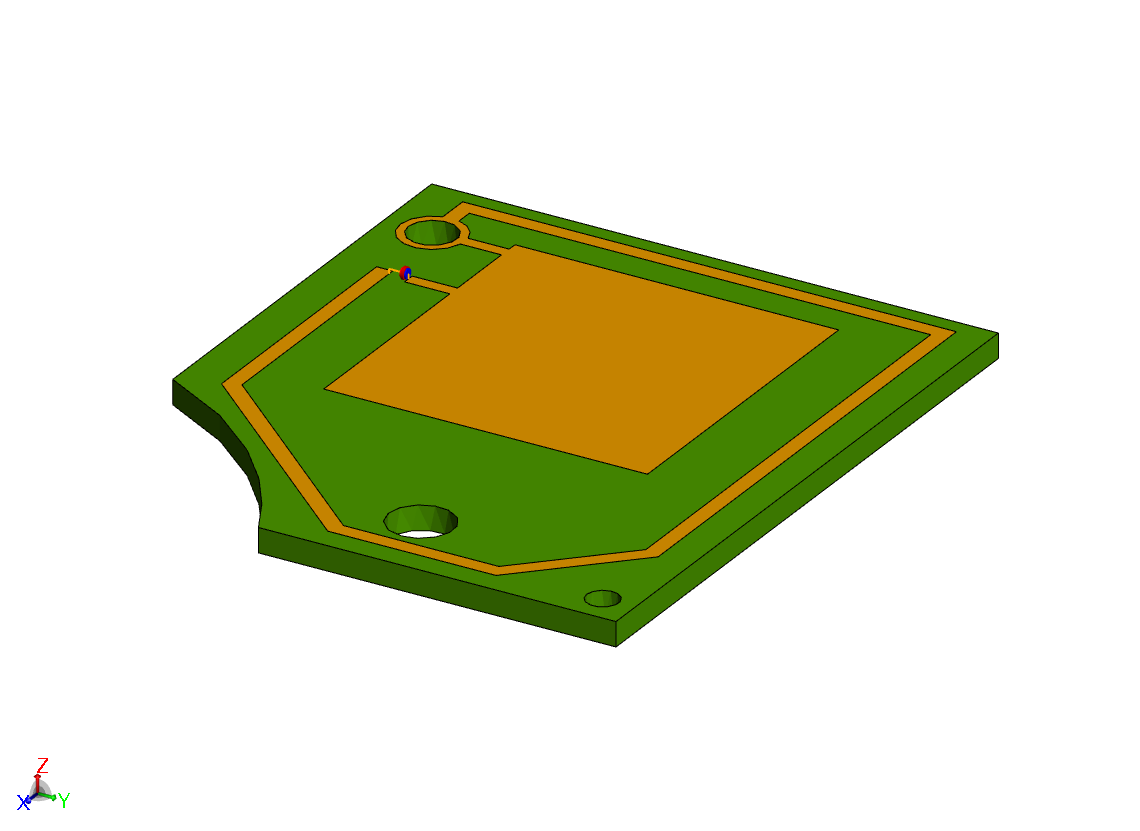
Remote keyless entry model
To establish a reference point, the remote’s signal was first simulated without a human body model, held at a representative height above an asphalt ground.
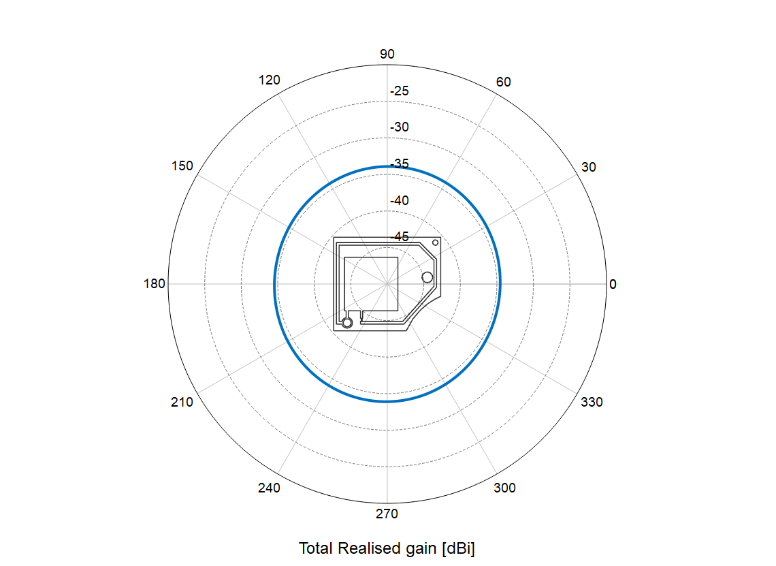 | 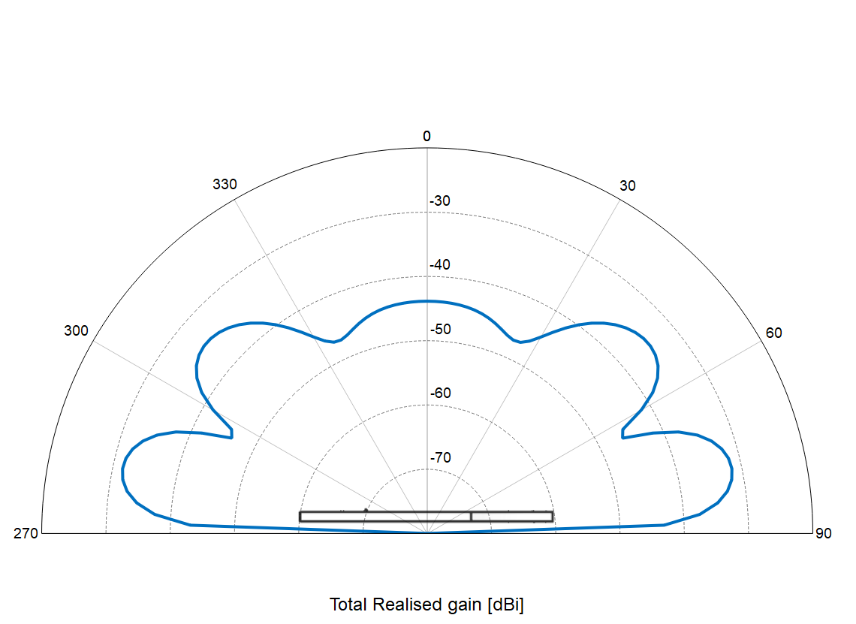 |
Baseline RKE signal without human body model
Next, an articulated human model was introduced. Holding the RKE with an outstretched arm at the same height as the previous experiment, the electromagnetic simulation was run again. The simulation showed a couple interesting differences. First, the range was increased with the introduction of the human model. The pattern was also more directive, increasing the realized gain in the forward direction toward the RKE’s target.
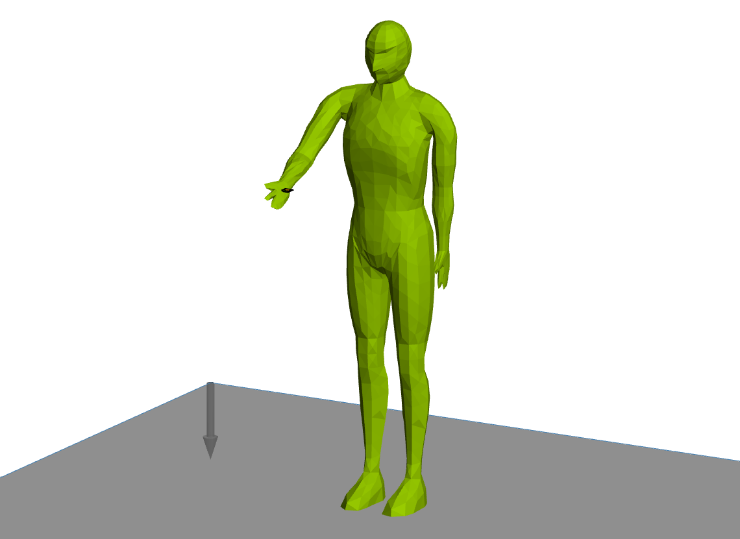 | 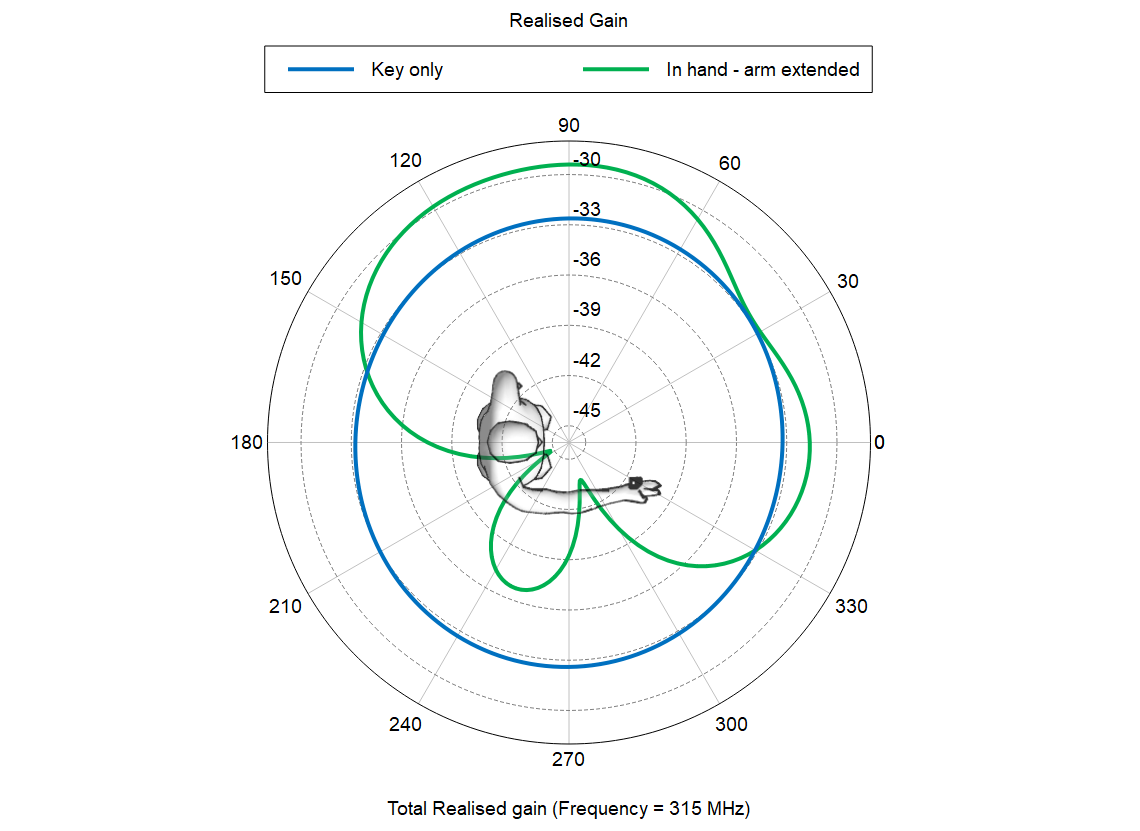 |
Realized signal gain with RKE in an extended arm compared with baseline
Finally, the model’s hand was oriented to hold the RKE to its head and ran a final simulation. Again, there was increased realized gain in the forward direction and increased overall signal range.
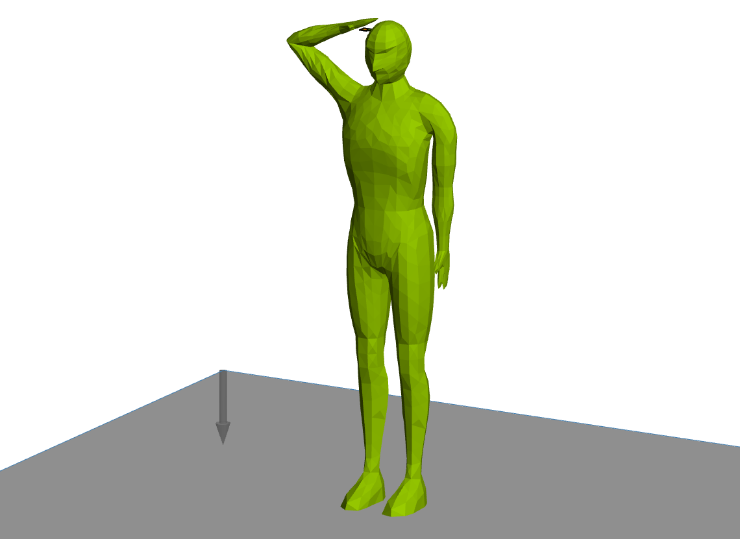 |  |
Realized signal gain with RKE in hand near the head, compared with baseline and extended arm
For the given remote keyless entry antenna tested, the simulations showed that holding the remote close to your head in certain orientations does increase the realized gain in the required direction and therefore increases the range. It turns out this hack really does work!
Thanks to the simulation confirming this hypothesis, next time you are struggling to remember where you parked, use this hack for a better chance at finding your car.
To learn more about using simulation for advanced antenna design, placement, and electromagnetic compatibility, check out the "Antenna Design with Altair Feko" webinar series.


